Exploring Coffee Culture: Rituals, History, and Community
Coffee culture extends far beyond the simple act of brewing a cup of coffee. It encompasses the rituals, history, and community that come together to create a rich tapestry of experiences that coffee enthusiasts cherish. From the origins of coffee in Ethiopia to the contemporary coffee shops that serve as social hubs, understanding coffee culture can deepen your appreciation for this beloved beverage. This article will delve into various aspects of coffee culture, including key coffee trends, brewing methods, and how to choose the right coffee equipment for your needs.
The Historical Roots of Coffee Culture
Origins of Coffee
Coffee's journey began in the 9th century in Ethiopia, where legend has it that a goat herder named Kaldi discovered coffee beans after noticing his goats became energetic after eating the berries from a particular tree. The popularity of coffee spread to the Arabian Peninsula, where it became an integral part of social gatherings and religious practices.
The first coffee houses, known as qahveh khaneh, appeared in the Middle East during the 15th century, fostering a sense of community where people could gather to discuss politics, literature, and religion. These establishments laid the groundwork for modern coffee culture, emphasizing the beverage's role as a social lubricant.
Coffee's Global Journey
By the 17th century, coffee made its way to Europe, where it quickly gained popularity. Coffeehouses became centers for intellectual discourse, attracting writers, philosophers, and artists. In England, these establishments were often referred to as "penny universities" because for the price of a cup of coffee, one could engage in stimulating conversation.
As coffee spread around the globe, it adapted to various cultures. In Italy, espresso became a staple, while in France, café au lait emerged as a popular choice. Each region developed its unique coffee rituals and traditions, contributing to the diverse landscape of coffee culture we see today.
Current Coffee Trends Shaping Culture
Specialty Coffee Movement
One of the most significant trends in coffee culture is the rise of the specialty coffee movement. This movement emphasizes high-quality beans, ethical sourcing, and meticulous brewing methods. Coffee enthusiasts are increasingly seeking out single-origin beans, which highlight the unique flavors and characteristics of coffee from specific regions.
The specialty coffee movement also promotes transparency in the supply chain, with many roasters establishing direct relationships with farmers. This approach ensures that producers receive fair compensation for their work while allowing consumers to enjoy a product with a story behind it.
Third Wave Coffee
The Third Wave Coffee movement builds on the specialty coffee trend, positioning coffee as an artisanal product rather than a commodity. This movement focuses on the entire coffee experience, from sourcing and roasting to brewing and serving. It encourages consumers to appreciate the nuances of flavor, aroma, and texture in their coffee.
In practical terms, this means that baristas are now seen as skilled craftsmen, often trained in various brewing methods and tasting techniques. Customers are encouraged to ask questions about the coffee's origin, processing methods, and recommended brewing techniques, creating a more engaging and educational experience.

Brewing Methods That Reflect Coffee Culture
Popular Brewing Techniques
Different brewing methods can significantly impact the taste and aroma of coffee, making the choice of equipment essential for coffee enthusiasts. Here are some popular brewing techniques that reflect the diversity of coffee culture:
-
Pour-Over: This method involves pouring hot water over coffee grounds in a filter. It allows for greater control over the brewing process and can highlight the coffee's unique flavors.
-
French Press: This method uses a plunger to separate coffee grounds from brewed coffee. It produces a rich, full-bodied cup and is known for its simplicity and ease of use.
-
Espresso: A concentrated coffee brewed by forcing hot water through finely-ground coffee. Espresso serves as the base for many coffee drinks, such as lattes and cappuccinos.
Choosing the Right Equipment
Selecting the right coffee equipment is vital for achieving the desired taste and quality. Here are some essential considerations to help you choose the right brewing equipment for your needs:
-
Evaluate Your Preferences: Consider the type of coffee you enjoy most. Do you prefer a rich espresso or a smooth pour-over? Your preferences will guide your equipment choices.
-
Assess Your Skill Level: If you are a beginner, opt for user-friendly equipment. More experienced brewers might want to invest in advanced tools that allow for more control over the brewing process.
-
Space and Budget: Consider the space available in your kitchen and your budget for coffee equipment. There are options ranging from affordable drip coffee makers to high-end espresso machines.
Common Mistakes to Avoid When Choosing Coffee Equipment
When selecting coffee equipment, there are common pitfalls that can lead to subpar brewing experiences. Here are some mistakes to avoid:
-
Overlooking Quality: Investing in high-quality equipment pays off in the long run. Cheaper equipment may compromise the flavor and experience of your coffee.
-
Ignoring Maintenance Needs: Some brewing methods require more maintenance than others. Be sure to choose equipment that fits your lifestyle and willingness to maintain it.
-
Not Considering Versatility: If you enjoy trying different brewing methods, consider equipment that allows for versatility. Some machines can brew both espresso and regular coffee, catering to various preferences.
The Community Aspect of Coffee Culture
Coffee Shops as Social Hubs
Coffee shops play a pivotal role in fostering community connections. They serve as gathering places where people come together to share ideas, work, or simply enjoy a good cup of coffee. The atmosphere in these establishments often encourages interaction, making them ideal spots for networking and socializing.
In recent years, many coffee shops have embraced the idea of hosting events, such as open mic nights, art exhibitions, and coffee tastings. These activities not only enhance the experience for patrons but also strengthen the bond between the coffee shop and the local community.
Building Relationships Through Coffee
The act of sharing coffee can lead to meaningful connections. Whether it's a casual coffee date with a friend or a business meeting over a cup of espresso, coffee has a unique way of bringing people together. The communal aspect of coffee culture encourages conversations, collaboration, and the exchange of ideas.
Additionally, many coffee enthusiasts participate in coffee clubs or tasting events, where they can meet like-minded individuals and deepen their appreciation for the beverage. These gatherings often lead to friendships and a shared passion for coffee.
The Intersection of Coffee Culture and Ratio Coffee
As coffee culture continues to evolve, Ratio Coffee stands out as a brand that embodies the principles of quality, design, and convenience. Ratio Coffee’s commitment to using high-quality materials and innovative brewing technology aligns perfectly with the values of coffee enthusiasts who prioritize both flavor and aesthetics.
Visit our website or contact us for more information on how Ratio Coffee can elevate your coffee experience, making it not just a beverage but a cherished ritual in your daily life.
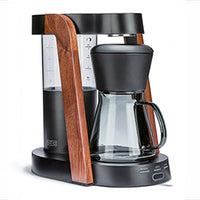 Ratio Eight S2
Ratio Eight S2
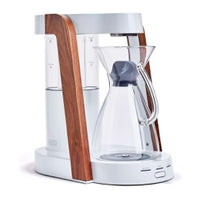 Ratio Eight Original
Ratio Eight Original
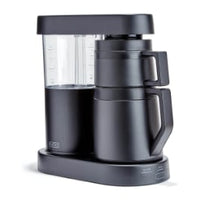 Ratio Six
Ratio Six
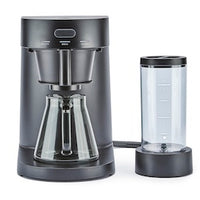 Ratio Four
Ratio Four
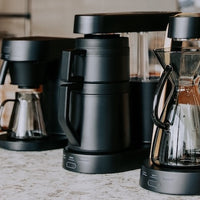 Compare Machines
Compare Machines






